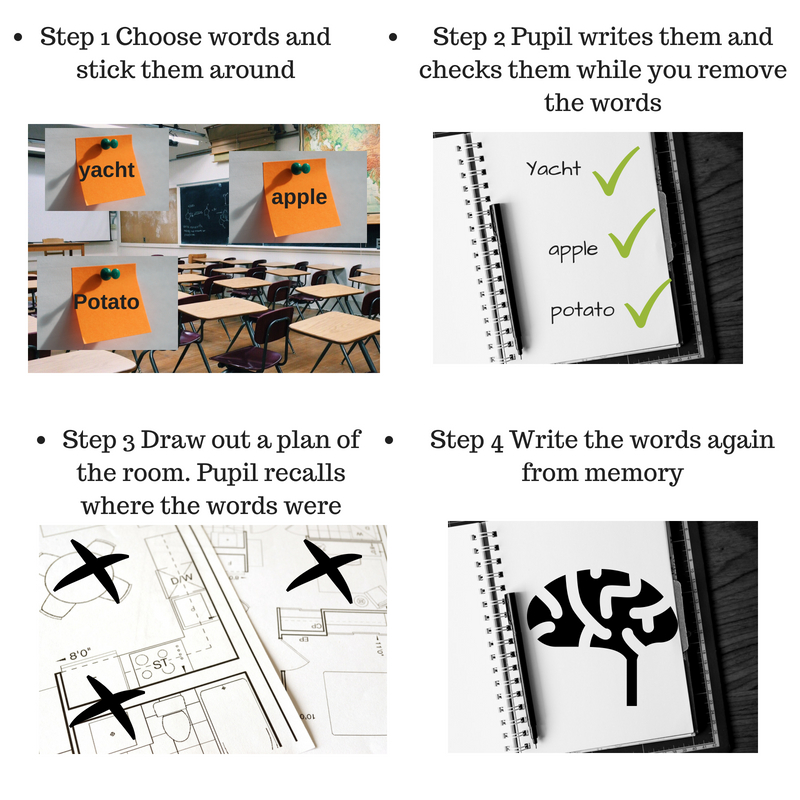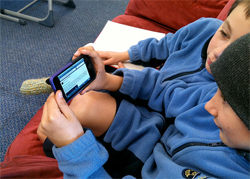The prefix ‘dys’ means that something is impaired or found to be difficult. In terms of learning, cognition and development in children, conditions such as dyslexia, dyspraxia, dyscalculia and dysgraphia are neurological disorders of the brain. They can be caused by injury, but most commonly are development difficulties. So how are these conditions likely to affect your school community, and what can you do to help?
Dyslexia
Dyslexia can be described as a variety of reading disorders, linked with an impairment of the ability to interpret spatial relationships and integration of auditory and / or visual information. Individuals with dyslexia may have difficulties with any or all of the following:

Dyspraxia
Dyspraxia is the inability to perform coordinated movements. Both fine motor and gross motor skills can be affected, as well as organisational skills, communication and concentration.
Dyscalculia
Dyscalculia is the inability to make simple mathematical calculations, and may include difficulty with any or all of the following:
Dysgraphia
Dysgraphia is an impairment of the ability to write correctly, and understand the rules of the formation of grammatical sentences, patterns of formation of sentences and phrases from words. Any organisational or memory difficulties will have a major impact.
Having read through the information above, you will recognise some of the difficulties presented by some of your pupils. Do you recognise the fidgety, frustrated, disorganised and tired pupil who appears to not listen? The pupil who jumbles up letters, numbers, gets words in the wrong order no matter how many times they try or practice? The pupil who is articulate, but unable to get ideas down on paper?
It’s worth mentioning here that these difficulties may well affect an individual’s mental health. That frustration and constant facing of difficulty could lead to high levels of anxiety, low mood, and depression. Learning under pressure can be a prerequisite of a vicious circle. That frustration and confusion may affect self-esteem and self-worth, which in turn can damage friendships, as their peers appear to stride ahead.

In terms of classroom management, pupils will require extra time when reading, writing or doing mathematical calculations. Activities and instructions need to be broken down. They may only be able to cope with one or two at a time.
Thankfully, there are a huge amount of apps, assistive technology devices, and other methods of recording available - such as voice recorders and programmes that convert speech to text. A comprehensive guide of apps to support Dyslexia and Dyscalculia difficulties is available to download for free from: www.callscotland.org.uk/downloads/posters-and-leaflets.
One of my students told me she uses a font called Open Dyslexic. She reported that she finds it very helpful, as it stops print jumping about on the page. Students can choose from a range of fonts and sizes, and just need to find which one suits them best.
Coloured overlays, or prescribed glasses with specific coloured lens, are also available. Encourage parents to take their children to an optician - there may also be other underlying problems.
Remember there are many highly successful individuals with dyslexia who have gone on to achieve great things: Prime minister Winston Churchill, Olympic swimmer & Arctic explorer Duncan Goodhew, and filmmaker Steven Spielberg. Famous people with dyspraxia, meanwhile, include Daniel Radcliffe and Albert Einstein!
As Rick Riordan - author of the Percy Jackson series of books - said:
“Dyslexic kids are creative, ‘outside-the-box’ thinkers. They have to be, because they don’t see or solve problems the same way other kids do. In school, unfortunately, they are sometimes written off as lazy, unmotivated, rude or even stupid. They aren’t. Making Percy dyslexic was my way of honouring the potential of all the kids I’ve known who have those conditions. It’s not a bad thing to be different. Sometimes, it’s the mark of being very, very talented.”
Want to receive cutting-edge insights from leading educators each week? Sign up to our Community Update and be part of the action!
I’ve been teaching one to one literacy for years now. I recall saying to parents (and I inwardly cringe at this memory) that spelling isn’t really that important and skills like reading, planning and understanding exam and essay questions should take priority. Spelling is something which can be overcome by spell check and predictive text. It is a waste of time learning how to spell, as it is the one skill - in my experience - that is the hardest thing to crack.
Pupils who struggle with spelling may get a rule for how to spell a word one week, only for said rule to disappear the week after. It can even happen in the same piece of writing. It is such a laborious process, and for pupils who find many elements of literacy difficult, spelling seems the easiest one to drop and avoid. However... avoiding spelling is doing the child or young person a complete disservice. Although it may be true that spell check will help in the future, that doesn’t change the classroom they are returning to; where they are likely to still handwrite their answers, have their presentation, grammar and spelling marked, and participate in group activities where they may have to write.
Spelling is therefore a must, but what do you choose to focus on? The general approach in the classroom is Key Stage lists and learning a few words a week. For children who need to see a word more frequently, and revisit those words regularly, this approach is not effective for long-term retention. A missing component of this approach is the understanding of that word and seeing it in context. Year 2 lists contain words such as improve and sure. Year 6 has some humdingers like hindrance and sacrifice.
I am a fervent supporter of developing a child’s vocabulary and enriching their communication skills with an increased lexicon, but how much time is invested in exploring these words? Children may perform well on spelling tests but not apply these words to their writing, which is surely the end goal?

One approach can be to support the teaching of the class lists, but breaking them down in more detail, understanding their meaning, using them in context and repeating them frequently. Still, this approach doesn’t feel quite right. Although it is reinforcing the class teaching and therefore has more curriculum relevance, it does not feel specific enough to the child or young person I am working with. It is likely that if they struggle with spelling that the age-appropriate list is too difficult for them, and that they will have missed a lot of key words.
Perhaps the teaching of key words is the way forward, with teaching becoming more tailored to the child, but it’s still not quite there or right for some of my pupils. I then discovered the most commonly misspelt word list. Surely if you can crack these, then you’re onto a winner. The bonus of using this word list is it’s not age-specific, it has a finite number of words on it, and the pupil can self-identify those that are tricky. Bingo! And what’s more, the words are popular and can be used in a variety of subjects. The one teensy drawback is that someone, somewhere has compiled it. I have no assurance that these are, in fact, the most commonly misspelt words. Putting that limiting thought to the back of my mind, I press on using these words to teach spelling.
Having looked at the ‘what’ and the next thing to tackle is the how.
I am conscious that spelling is most of my pupils’ Achilles heel, and having to struggle to spell words in front of anyone can be inhibiting. My first technique is therefore active, fun, and starts with a high success rate. This may take some explaining, but I will do my best.

Using up to 10 of the words chosen, write them on Post-its and, when the pupil is out of the classroom (this works best during a one to one), stick the words around the room. The pupil has to write the words on a whiteboard or large piece of paper without removing the word from its spot. They can revisit and look at it as many times as they need. When they have written them all, they can check their accuracy and hopefully tick them all off as correct. You collect the words as they check their work.
Next, you create a map of the room (technical drawing expertise is not necessary, nor is a huge amount of detail), making sure you include any furniture on which a word was placed. When complete, the pupil then marks with an X where the words were. Hopefully, they will look around the room and maybe even revisit places to jog their memory, visualising the previous set up.
Okay, everyone still with me? This is about memory and recall, and can be applied to revision strategies too. Once they have done this, the final step is to try and recall where the words were and spell them correctly. At this stage, the spelling is only part of a fun activity; the expectation and pressure have been completely lifted as their attention is on remembering the location of the words. I have found this to be the most fun I’ve had teaching spelling and pupils’ accuracy on this final activity is high. They leave having spelt words they’ve previously struggled with and had a really enjoyable, fun lesson. Follow-on activities around finding the words in text, writing them in shared stories and writing definitions can all then be explored.
Essentially, any method of identifying words - be it through assessment, word lists or key words and the subsequent instruction in learning how to spell - has to suit the child that you are working with. Some need to go right back to basics with phonic instruction and building words, whereas others appreciate the etymological approach. It is absolutely necessary* to know your pupil. Always keep in mind what works for them as an individual, all the while making fun and creativity a priority.
*Here's a spelling mnemonic for this ever-tricky word: 'Never Eat Crisps Eat Salad Sandwiches And Remain Young'
Want to receive cutting-edge insights from leading educators each week? Sign up to our Community Update and be part of the action!

When students have access to their own Internet-connected devices at any time, both at home and at school, maths instruction has the potential to be revolutionised. Here are three great innovations available to maths instructors in 1:1 classrooms:
1:1 technology allows for extreme differentiation, even individualisation, of both the type of content each student is working on and the tasks each student is asked to complete. Instead of all working on the same topic at the same time, students in 1:1 classrooms can watch teacher-created videos (or videos from an external source) on whatever mathematical topics they need to learn next. Once that’s complete, the student can work on differentiated maths problems that match up with the topic taught in the video. As a result of 1:1 technology, each student can now be permitted to learn at his or her individualised pace, moving from topic to topic as quickly or slowly as needed. This shift to mastery-based learning, rather than calendar-based learning, can completely revolutionise a maths classroom all by itself.

A community-driven platform for showcasing the latest innovations and voices in schools
Pioneer House
North Road
Ellesmere Port
CH65 1AD
United Kingdom